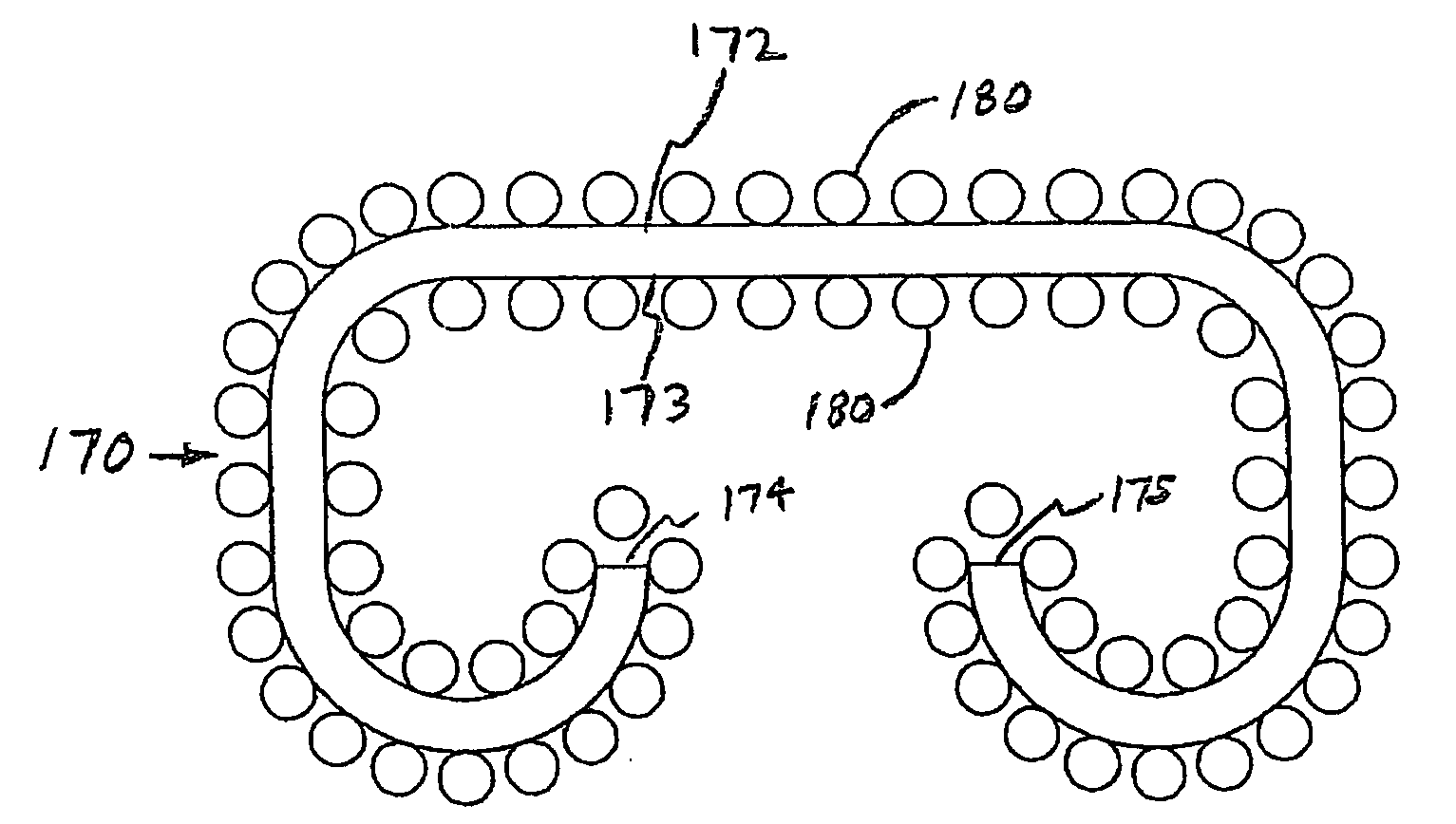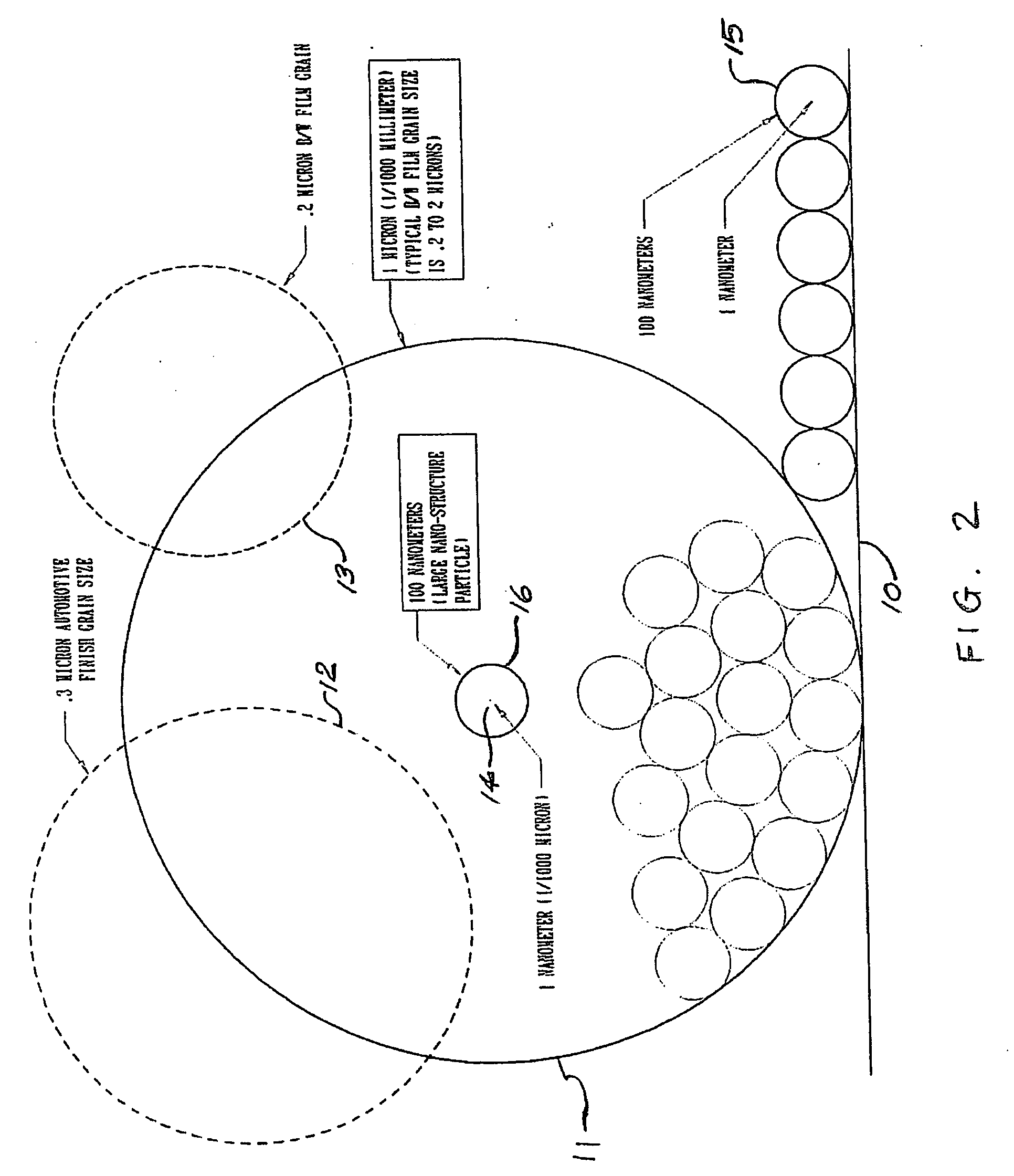Surface treatments and modifications using nanostructure materials
a nanostructure material and surface treatment technology, applied in the field of surface treatments, can solve problems such as reducing surface tension, and achieve the effects of reducing surface tension, promoting or inhibiting ingrowth, and relieving stress on the immune system
- Summary
- Abstract
- Description
- Claims
- Application Information
AI Technical Summary
Benefits of technology
Problems solved by technology
Method used
Image
Examples
Embodiment Construction
[0035] Referring to FIG. 1, there are shown comparable measurements of a human hair 4 and a six-foot tall man 8 shown in nanometer. A nanometer is one-billionth of a meter. The six-foot tall man 8 is approximately 1,830,000,000 nanometers tall. A normal human hair 4 is approximately 50,000 nanometers in diameter. A further comparison can be seen in FIG. 2, where a particle 11 having a diameter of one micron is shown resting on a substrate 10. FIG. 2 further illustrates a particle 12 having a diameter of approximately 0.3 micron representing the grain size of a fine automotive finish or paint. A smaller particle 13 further illustrates the smallest grain size comprising a black / white photographic film having a 0.2 micron diameter. By comparison, a particle 14 having a diameter of one nanometer is represented by an extremely small dot (particle) 14 in the center of the drawing. To improve the visibility of the scale, the nanoscale particles 16 are enlarged one hundred times. A particle...
PUM
| Property | Measurement | Unit |
|---|---|---|
| Width | aaaaa | aaaaa |
| Contact angle | aaaaa | aaaaa |
| Force | aaaaa | aaaaa |
Abstract
Description
Claims
Application Information
 Login to View More
Login to View More - R&D
- Intellectual Property
- Life Sciences
- Materials
- Tech Scout
- Unparalleled Data Quality
- Higher Quality Content
- 60% Fewer Hallucinations
Browse by: Latest US Patents, China's latest patents, Technical Efficacy Thesaurus, Application Domain, Technology Topic, Popular Technical Reports.
© 2025 PatSnap. All rights reserved.Legal|Privacy policy|Modern Slavery Act Transparency Statement|Sitemap|About US| Contact US: help@patsnap.com



